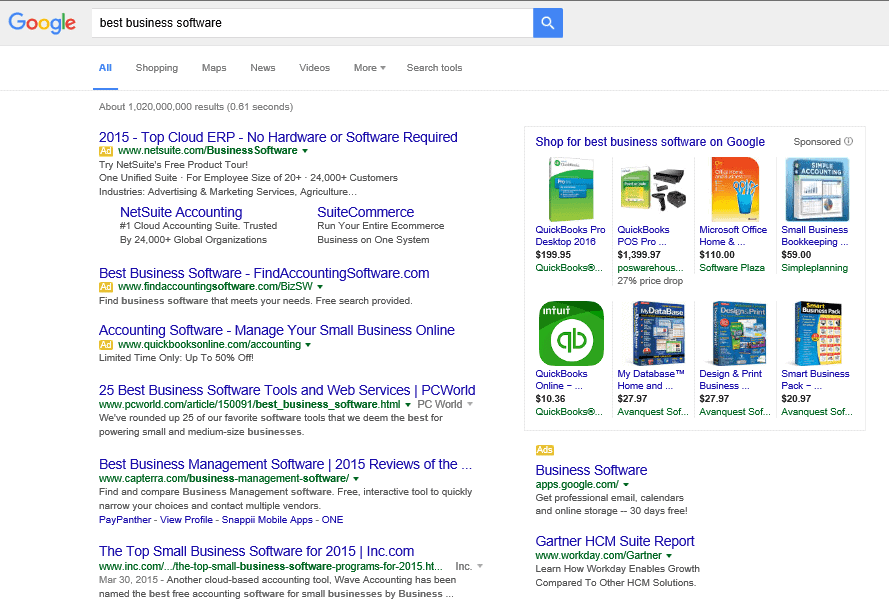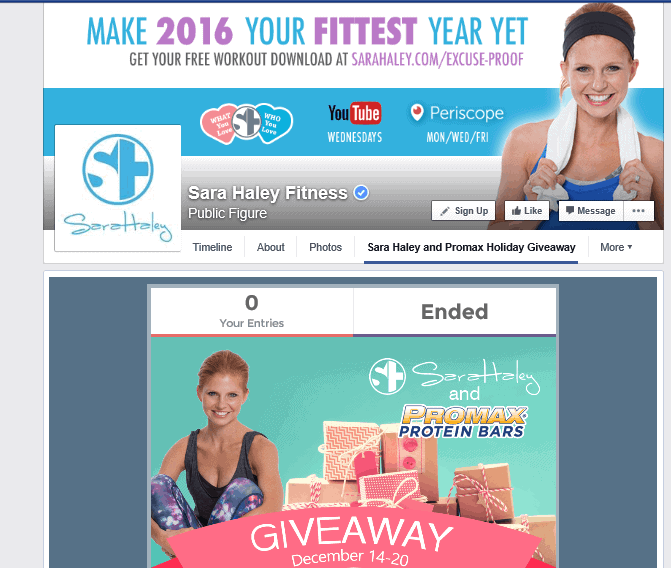Digital marketing is a constantly evolving field. Years ago, all you needed was a website, and maybe a blog. Then along came social media. Today, there is such a proliferation of platforms and content online that it’s a challenge to get your marketing message to stand out amid all the noise.
Of course, marketing strategies have evolved right along with all the changes, and today, the best way to get your message out to your target audience online is to harness the power of influential people and sites.
Think about it. Let’s say you’re looking for some software to help your company grow. Which would you trust more – the software companies’ own promotional material or an objective review written by an online business software expert?
According to a recent study, an incredible 92% of consumers prefer to gather information for potential purchases from people they’re familiar with over any other source.
92% of consumers prefer to gather information for potential purchases from people they trust Share on XThat means they’ll look for reviews on their favorite blogger’s site, or check to see what a major news outlet says about a product or company before they go to the company’s own website.
Several different marketing strategies have emerged in recent years in order to take advantage of this behavior. And because they have been evolving with the new online trends and new research, the names they’re known by have also been fluid, sometimes meaning different things, sometimes being used interchangeably. Digital PR. Outreach. Influencer Marketing. Today, it can be confusing to know exactly what each one means since the terms have such a history of change.
Luckily, this area of digital marketing has now solidified into a few definitive strategies, each with their own distinct name. A truly effective marketing plan should incorporate all three, in order to take full advantage of the way consumers shop today. Here’s a breakdown of each one, along with some tips on how to approach the influencers you choose in order to up your chances of a positive response.
Outreach
Outreach is all about SEO and authority. When people need information to help them make a purchasing decision, what’s the first thing they do? Google it, of course! And since Google gives preferential treatment to authoritative, popular websites in its rankings, it just makes sense for companies to reach out to bloggers in their industries who have large followings, and industry websites with significant traffic, to ask them to talk about their products or services. After all, when a potential customer googles “best (insert your product or service here),” you want your company’s name to be among those mentioned in the top few listings, right?
But that’s not the only reason outreach is important. Google also adjusts its rankings based on how many links on those authoritative sites point back to your website. So a company discussed and linked to on a few popular industry sites will show up much higher on a search engine results page than one that’s not being talked about online. Whether you’re guest blogging on an industry site or getting a brief mention in an industry round-up, outreach is vital for effective search marketing.
13 Tips For Writing an Effective Outreach Email
The hard truth is that you’ll never even get the chance to write a guest blog post or article if you don’t get the first step of the outreach process right. That first step is writing an email to the owner of the site.
Think about it. If you’ve determined that a certain site would be the ideal place for a stint as a guest blogger, you can be sure that plenty of other people have, too. And all of those other people are also sending the site owner emails requesting to guest blog, as well. So if you want even the faintest hope of ever being given the chance to widen your audience via that site, you’ve got to make absolutely sure that your outreach email stands out from all the others. So how can you ensure that your message catches the site owner’s attention – and not only that, but also actually merits a positive response? Here is a list of some tips for writing the perfect outreach email, to help you on your way.
1. Pay attention to the subject line! If you stumble on this all-important first step of the process, the game’s already over. Writing a spammy-sounding subject line, or one that is off-putting in any way, is likely to land your outreach email in the Trash folder without so much as a second glance. Be straightforward in your subject, letting the recipient know exactly what awaits him inside. Being mysterious is a red flag for spam. If possible, let him know what kind of time commitment he’s looking at in dealing with your email, as well – “Quick Question – Guest Blog Idea” is much more likely to opened and read than “Thought we might start a discussion about the possibility of guest blogging.”
2. Personalize a greeting. The best way to draw someone in to read the rest of your outreach email is to use their name. Starting right into your request without a greeting, or even going with a generic “Hi!” will not inspire much hope that your email isn’t just a mass mailing. Go old-school and use “Dear So-and-so,” or even “Hi, So-and-so,” to gain the reader’s attention.
3. Do your research. Yes, it’s definitely important to read at least a few of this person’s blog posts before emailing her about guest posting. But going beyond that is what will make your email stand out. Do some research about the site owner herself. Find out what she does, what her background is, what her family’s like. Maybe you’ll find you have something in common that you can use to make a real connection – and at the very least, you’ll be able to mention something from her life to show her on an even deeper level that this is no mass mailing.
4. Get to know their network. Even if you have no connection with the site owner – and let’s face it, you probably won’t – you can forge one by getting to know someone from his network. Check out his LinkedIn profile, and see if you already know anyone who’s also a connection of his. And if not, try to establish contact. Look at their other social media channels, as well. But once you’ve found a mutual friend, don’t just name-drop. Run your guest blogging idea by that mutual connection, and see if they think it’d be a good fit. If they like it, then you can include that nugget of gold in your email, as well.
5. Give your opener genuine context. Whether or not you’ve mentioned the site owner’s background or a mutual friend, your opening paragraph has to make the context of your request clear. What is it about the site that makes it the perfect place for you to guest blog? Which past blog posts did the site owner write that you found especially useful or pertinent to your topic? This first paragraph should prove beyond a shadow of a doubt that you not only read this person’s blog on a regular basis, but also understand their focus and their audience.
6. State just one goal. Even if you’re just bursting with ideas for guest blogs, reviews, interviews, etc., don’t give in to the temptation to mention them all in this first email. Choose the one central goal you have – in this case, writing one guest blog post for her site – and only ask for that. Overwhelming the site owner with five different requests at the same time will probably start those warning lights flashing – this person wants way more than I can give them – and will probably lead to a ‘no.’
7. Give your unique angle. This part is just as important as establishing a context for your request. Sure, you may understand the site owner’s audience and focus – but if the guest post you propose sounds just like the posts that blogger writes every week, why on earth would he publish it? Tell him how your idea takes his focus and approaches it from a unique angle, one that only you can provide, because of your specific expertise.
8. Be persuasive. Don’t beg – but don’t get bossy, either. Instead, use your powers of persuasion to show the blogger what’s in it for her. How will her audience benefit from your guest post? How will she benefit from it?
9. Don’t overdo the close. When you sign off, put your name, your title, and a link to your website. That’s it. Don’t add a pile of other links, or a bunch of pictures – keep it simple and professional.
10. Be brief. This piece of advice goes for the entire outreach email. If your note rambles on endlessly, your chosen blogger might just give up and stop reading. Each section – your personalized opening, your single request, and your persuasive pitch – should be as succinct and to-the-point as possible.
11. Keep your email basic. Adding images or any kind of formatting will raise warning flags in a site owner’s mind – he shouldn’t have to click “display images” just to read your email. Keep it simple and easy for everyone involved.
12. Use inviting language. This can be one of the trickiest areas to navigate, but it’s also probably the most important of all. Yes, you want to be succinct, but you also don’t want to sound rude. Instead of saying something like, “I want to write a guest post for you sometime before next Friday,” try softening it by saying, “I’d love it if we could discuss my writing a guest post for you sometime.” It’s vital to be friendly, polite, and succinct all at the same time.
12. Timing is important. When you send that outreach email can be an important factor in whether it gets opened and read, too. Mondays can be too busy, and on Friday, most people are just wrapping things up for the weekend. Sending your email on a Tuesday morning, for example, is a good way to have it pop up in the site owner’s inbox at a time when they’ll be more receptive.
Using these tips will help to ensure your email gets read – and hopefully, gets a positive response, as well.
Digital PR
Digital PR focuses on major news outlets and respected, established websites. Just as traditional PR gets the word out in the traditional media about your company, digital PR does the same online. It’s one thing to be mentioned on a niche industry website – and something entirely different to be discussed on Forbes, or Inc., or HuffPo.
For one thing, Google loves major platforms such as these, so digital PR has significant outreach-type benefits. But it’s also a matter of credibility. Being featured on a news outlet or well-known website is something companies can – and do – brag about, in order to let their audiences know that they’re to be taken seriously. And of course, the number of eyes a business can get in front of via these sites is huge – albeit not as targeted as those reached through industry sites. Digital PR is an important way to establish your company as a respected player in your industry and make a splash in terms of brand awareness and SEO rankings.
Influencer Marketing
Influencer marketing is the hottest form of digital marketing today, and with good reason. Companies are realizing an ROI of $6.50 for every $1 spent on influencer marketing, according to research.
Companies are realizing an ROI of $6.50 for every $1 spent on influencer marketing. Share on XThis final strategy involves partnering with influencers online – primarily those with large followings on social media – to promote your products or services through giveaways, blog reviews, or other social media campaigns.
This marketing technique takes advantage of the power of word of mouth advertising, which has been shown to be twice as effective as paid advertising at generating sales. When a potential customer’s favorite Instagram influencer holds a contest offering a free product to the winner, all the while touting the product’s great qualities, or their favorite blogger shares pictures or video of the new, exciting product they just received, it’s just as if a trusted friend is recommending that product.
4 Basic Rules for Approaching Influencers
Influencers make a name for themselves by creating a community. Working with them helps you build your audience and network by creating stronger customer relationships via that already existing community. But reaching out to influencers can be intimidating at first, so here are some tips on the best way to go about your approach.
1. Be real
Working on the internet has us interacting with screens most of the time. That said, it doesn’t mean that people aren’t still capable of sniffing out a phony. When you approach an influencer, be honest about your motives (which should be genuine). Make sure that you stay on brand in your message. If your influencer goes to your website and your social media channels and sees that the site has a certain sort of presence, try to bring that through in your pitch email also.
2. Be friendly
We’ve seen it happen: you get so excited that you oversell yourself. You come across as aggressive, and that isn’t a good way to win over your influencer’s heart. Additionally, in the case that the influencer says no and doesn’t want to partner with you, remain cordial. Remember that working with an influencer is all about relationship building, and even if your pitch doesn’t go as planned, you don’t want to burn a bridge you haven’t gotten the chance to build.
3. Start small
We’re all busy people, but imagine what an influencer’s inbox looks like. If you’re messaging them, you are probably not the only one. When you reach out to an influencer, make your email short and sweet with just the information you need to get across. And don’t scare them off by suggesting a huge, long-term campaign. Start out by discussing a small collaboration that will benefit both parties by increasing conversions.
4. Provide all the information…and then some
When you approach an influencer, your goal is not to have too much back-and-forth about your pitch before receiving the go-ahead. Make sure that you provide all of the information about your idea: the research you’ve done, why you think it’ll be worthwhile, and the results you expect to come from the partnership. Also be sure that you are not only presenting one idea to the influencer. Look at the other content they have on their blog or social media pages and recommend 3-4 pitch ideas to them so that they have options. Based on what may work best for them at the time, this will increase the chances that you’ll hit the nail on the head with at least one of your pitches. It also helps to show that you’ve taken the time to come up with various ideas to try and find the one that may benefit them the most.
These three different strategies – influencer marketing, outreach, and digital PR – can be used to great effect on their own, but are much more effective when used together as part of a full, integrated digital marketing plan. Just imagine the response if your company seemed to be popping up everywhere for your online audience – on authoritative industry sites, on major online outlets, in their Google searches, and in their social media feeds. If the old sales adage of 7 touches holds true, then it won’t take long for your company to become a trusted name in this way, leading to a real ROI.







